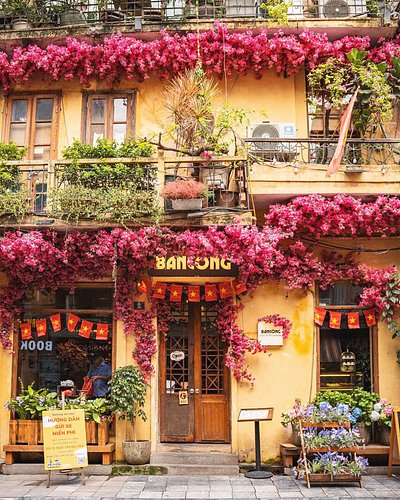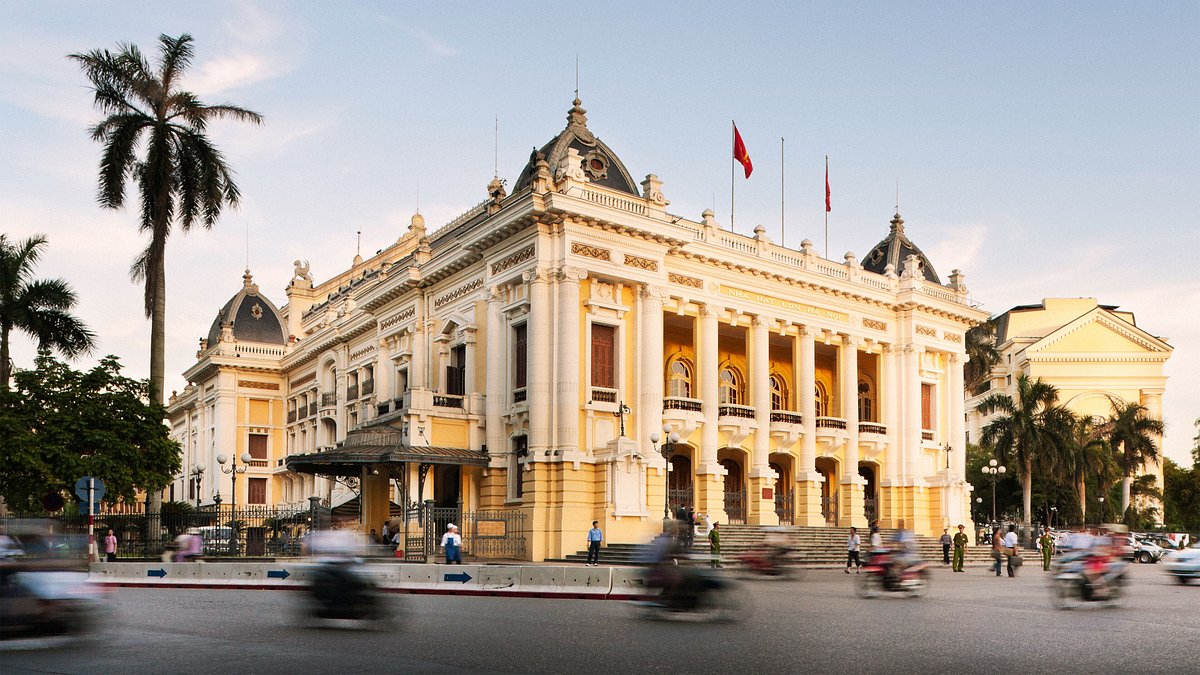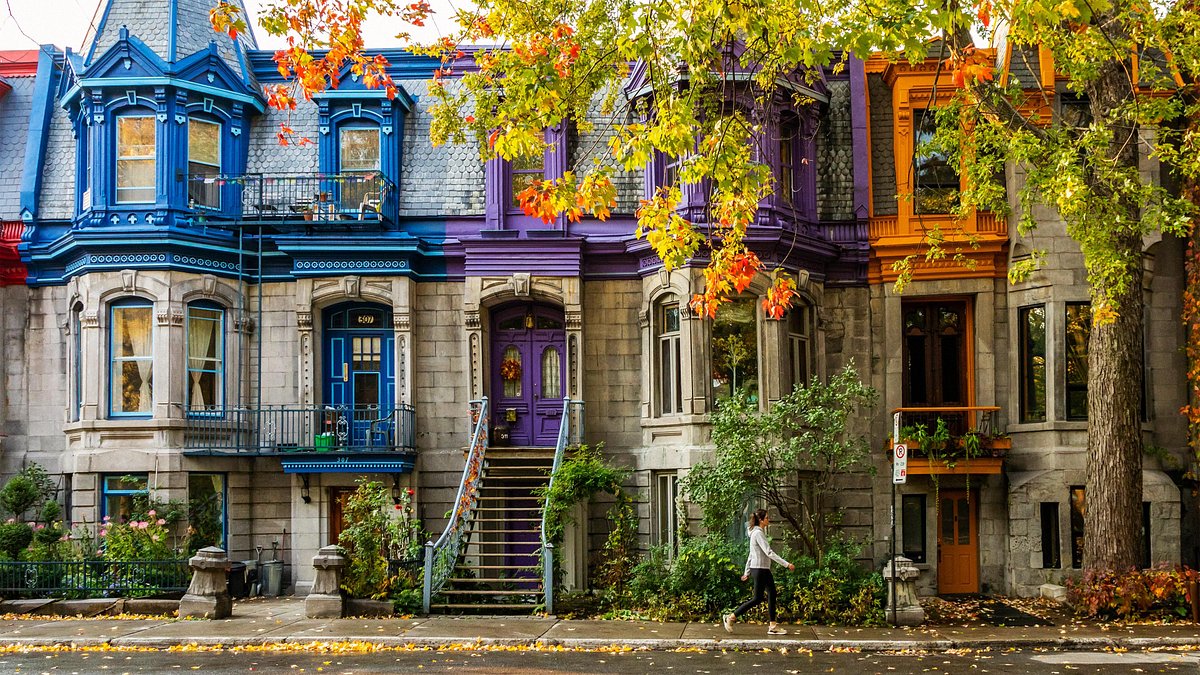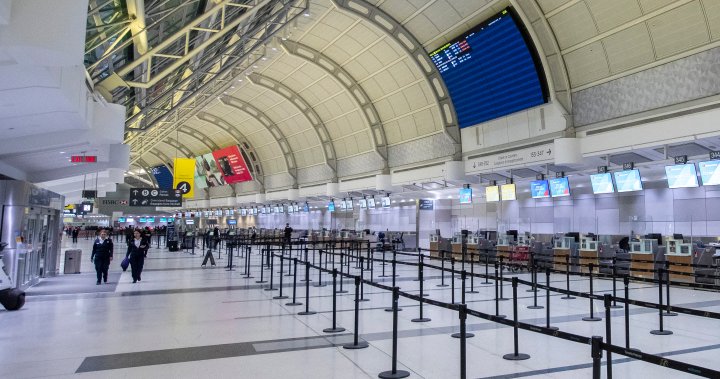Hanoi may be more than 1,000 years old, but it has a buzz that you’ll pick up on right away. From the crack of dawn, locals are out practicing tai chi and laughter yoga (yes, it’s really a thing) around the lakes. Throughout the day they chat over iced coffee with milk at sidewalk cafes, and after the sun goes down they drink locally brewed beer at their favorite watering holes. Hanoians take pride in their legendary food scene, so they devote a great deal of time to slurping noodles in street kitchens and checking out the newest restaurants.
Two days is just enough time to take all of this in, as well as duck into some of the city’s centuries-old temples and soak in its complex culture and history at the museums. If you’re fine on your feet, the first day is entirely walkable. Plan on a few taxi rides on the second. Tripadvisor ratings and reviews back up all our suggestions, ensuring that you’ll fall for Vietnam’s capital city just like countless others.
DAY ONE

MORNING: Take a loop around the lake
On your first morning, work up an appetite with a walk around Hoan Kiem Lake, in the center of the city. This fable-filled body of water—said to be home to a turtle god—is enveloped by drooping trees, gardens in full bloom, and storied relics like Ngoc Son Temple. Wake up early enough and observe tai chi practitioners, laughter yogis, and other dedicated Hanoians going about their morning routines.
Forgo the hotel renditions of Vietnamese favorites like pho and banh mi and opt for the real thing instead. Breakfast on pho bo (beef noodle soup) at Pho Thin 1955 or banh cuon (wet rice pancakes) at Banh Cuon Nong. Both spots are a short stroll from the lake.
Follow breakfast with a Vietnamese iced coffee with milk in Hanoi’s French Quarter, which begins on the southern edge of Hoan Kiem Lake. For a streetside classic, try Café Mai, where you can also buy locally roasted beans. For something more refined, head to Habakuk. Both cafes are a 15-minute walk or five-minute taxi ride from the lake.
After you finish your coffee, explore Vietnamese culture and history through a different lens at the nearby Vietnamese Women’s Museum. Tripadvisor readers recommend the exhibit on the lives of female street vendors.
Travelers say: “We really enjoyed our visit to [the Vietnamese Women’s Museum], which tells the story of women in different aspects of life in Vietnam… We found the floor dedicated to women in history particularly enlightening.” –@KTP310
AFTERNOON: Get lost in the Old Quarter
Walk 15 or 20 minutes north (or take a quick taxi ride) to the tangle of alleyways known as the Old Quarter. It’s the best part of the city to hunt for hidden boutiques, explore the markets, and sample the local cuisine. Getting lost in this pandemonium is part of the fun. As you wander around, look out for Bach Ma Temple, one of the oldest in the city. Inside is a statue of the white horse said to have chosen this spot for the city walls. The 19-century Ancient House, a merchant’s residence built around two courtyards, is also worth a look.
When you need to refuel, head to one of the more than 100 cafes scattered around the neighborhood. (Better yet, sign up for a food tour. There are some good options below.) For egg coffee, a Hanoi specialty that uses egg yolk in place of milk, try Café Giang. For coconut coffee, another local favorite, head to Bancong, housed in a beautifully restored French mansion. For something a little stronger (don’t worry, it’s barely 3 percent alcohol), seek out a bia hoi (fresh beer) bar like Lan Chin.
HANOI FOOD TOUR AND COOKING CLASS OPTIONS
- Can’t decide where to eat? Flavors of Hanoi arranges bespoke walking tours of the Old Quarter that let you sample lots of different dishes from storefront eateries along narrow alleyways.
- Offering a classic street food experience, Ha Food Tours allows you and your fellow travelers to take to the streets in search of favorites like steamed pancakes and noodle soup.
- Enjoy cooking as much as eating? Sign up for a cooking class with Apron Up, where you’ll gather your ingredients at one of the city’s markets and learn how to cook five classic dishes.
EVENING: Watch sunset over the water
Time for a breather. Take a 25-minute walk (or 10-minute taxi ride) northeast to Truc Bach Lake, in a neighborhood that is comparatively calm compared to the chaos of the Old Quarter. If you manage to get to Ngu Xa, a small islet near the lake’s eastern shore, before dark you can watch the sun as it sets over the water. Dine on pho cuon (spring rolls with stir-fried beef) and other local specialties at Pho Cuon 31.
Hanoi is not known for its pumping nightlife, but it does have an eclectic bar scene. With plenty of bia hoi bars, the Truc Bach neighborhood is a good place to jump in. Check out Lang Thang, a cheap and cheerful watering hole popular with young Hanoians. Another option is cocktails at Ma Xo, where you can enjoy lakeside seating.
DAY TWO

MORNING: Engage in some scholarly pursuits
On your second day you have time to explore farther afield. Jump in a cab after breakfast and head west to the Temple of Literature, about 10 minutes from Hoan Kiem Lake. This stately structure is close to 1,000 years old, making it one of Southeast Asia’s oldest universities. If the crimson gate looks familiar, it’s because it appears on the back of the 100,000 dong bill.
Travelers say: “[The Temple of Literature] offers a perfect glimpse of Hanoi’s dynastic history. Modeled after Chinese ideals on academic excellence, the Temple of Literature worships the Shandong scholar-saint Confucius as well as notable academics. It is quite interesting to note that imperial scripture and teachings were in traditional Chinese. The building itself is also pretty impressive.” —@Leonhkkny
Hail another taxi for the 15-minute ride west to the Museum of Ethnology, one of Vietnam’s most compelling museums. You’ll find detailed exhibits on marriage ceremonies, funeral rites, and other cultural practices, as well as a multicolored array of traditional clothing. Outside there’s a garden with a dozen or so houses in various styles from around the country.
MOTORBIKE AND JEEP TOUR OPTIONS
- With a Vintage Vespa Tour, you can hop onto the back of an antique scooter and zip through the crowded streets of Hanoi. It’s less scary than it looks.
- Women lead the way for the popular Hanoi by Night Motorbike Tours, which traverse the Old Quarter and other neighborhoods after dark.
- If the idea of getting on a motorbike terrifies you, jump into a Soviet-era jeep with Hanoi Backstreet Tours. Tripadvisor readers say this tour is one of the best available.
AFTERNOON: The legacy of kings
On your way back to the center of the city, stop at Cha Ca Anh Vu for fried fish with noodles, another specialty in Hanoi. Afterward, head to the walled complex known as the Imperial Citadel. Here you can explore the different layers of Hanoi’s long history, from its feudal beginnings to the colonial period to the catastrophic war that divided the country. You’ll see an iconic flag tower, grand gates, colorful temples, and an underground military headquarters.
From the Imperial Citadel, it’s a 10-minute walk to the Ho Chi Minh Mausoleum, which holds the body of modern Vietnam’s founding father. Entering the mausoleum isn’t easy—the chamber is usually closed to visitors, and when it’s open there are long lines—but the tomb is impressive from the outside, as are the stately colonial buildings that flank it.
EVENING: Night sites and cocktails
Finish your trip where you started: in the streets surrounding Hoan Kiem Lake. There are plenty of eateries where you can sample modern Vietnamese fare. If your budget allows it, head to one of the city’s fine dining establishments like Chapter. Hanoi’s dining scene is becoming increasingly diverse, and Chef Quang Dung adds to the mix with a menu inspired by recipes from Vietnam’s more far-flung regions, like the northern mountains.
As a final hurrah, raise a glass at one (or several) of the city’s hidden speakeasies like Ne, which serves a pho-inspired cocktail.
Worthy detours along the way
Know Before You Go
-
High season runs from October to February, but visitors never seem to overwhelm the city. In terms of weather, October, November, and December are the best months to visit. This is when the city is cool, dry, and sunny. January and February can be cold, and the air quality is not the best. March and April are generally warm and wet.
The city’s long summer—May through September—is hot and humid, with the occasional storm rolling through. Though some days can be blisteringly hot, this is when Hanoi is at its most attractive, with bright sunshine and vibrant colors.
-
Some museums, like the Museum of Ethnology, are closed on Monday. Most stores, bars, cafes, and restaurants are open every day. Hoan Kiem Lake and large chunks of the Old Quarter are free from traffic on weekends, making this the ideal time to visit.
-
Business hours in Hanoi are complicated. The biggest annoyance facing travelers is that some (but not all) museums close for a long lunch break, usually from 11:30 to 1:30. It’s best to check in advance. Most shops and cafes are open from morning to night. Many restaurants are also open throughout the day, although some more upmarket establishments are only open for lunch and dinner.
-
Hoan Kiem Lake: There are a dozen or so hotels around this local landmark, including the Metropole, one of Asia’s great hotels. For lovers of French colonial architecture, it’s a destination all its own. From this neighborhood you can get anywhere in the city with ease.
Old Quarter: Beguiling or maddening depending on your point of view, the Old Quarter is Hanoi’s most atmospheric place to stay. Some boutique hotels, like La Siesta, manage to retain the charm of the neighborhood while insulating you from the noise.
French Quarter: Comparatively few travelers stay in this stately corner, giving the broad boulevards and leafy parks a local vibe. Like the name suggests, Hotel du Parc is close to the greenery in Thong Nhat Park.
-
By foot: Once you’ve accepted the fact that Hanoi’s roads and sidewalks are a free-for-all, you’ll realize that the city is relatively friendly to pedestrians. Its most interesting downtown neighborhoods are easily walkable. To move between neighborhoods, take a taxi.
By taxi: Hanoi’s public transport system wasn’t designed for visitors. Fortunately, taxis are cheap and ubiquitous, and ride-share apps like Grab are an efficient option. If you do opt for a taxi, make sure the driver uses the meter.
By motorbike taxi: Motorbike taxi drivers loiter on street corners, but they drive a hard bargain. Give it a go if you enjoy haggling, but otherwise use a ride-share app like Grab, which allows you to select a motorbike instead of a car. Motorbikes are often faster than cars because they can weave through the traffic.
Airport transfers: Taxis line up outside of the domestic and international terminals. Some drivers may try to negotiate a price, but it’s simpler if you ask them to use the meter. Most hotels can arrange airport pickup for a comparable price. The bright orange Bus Express 86 departs regularly and takes about an hour to reach the Old Quarter.




